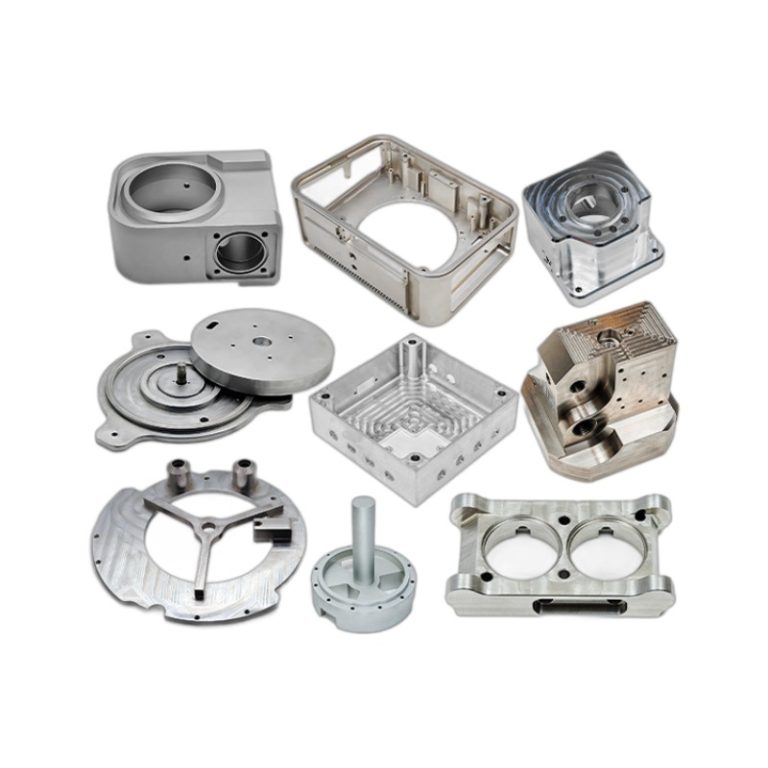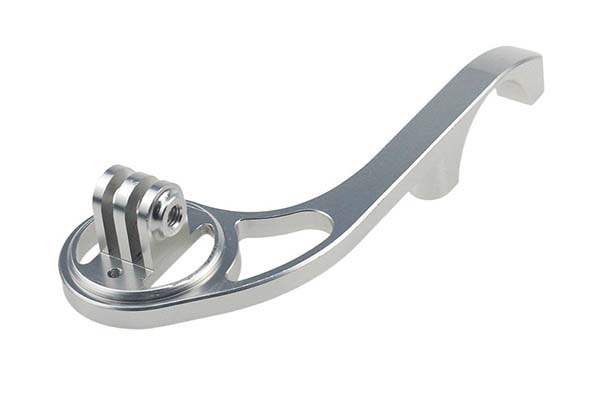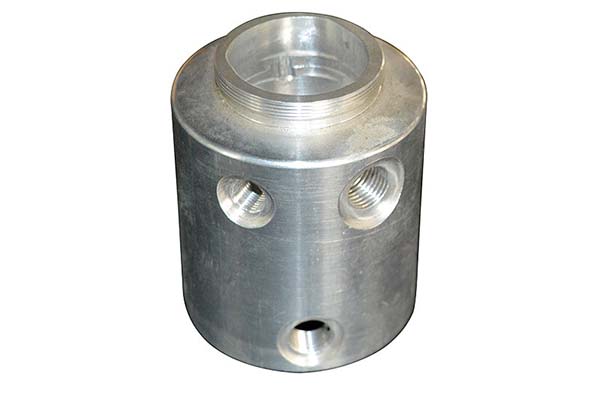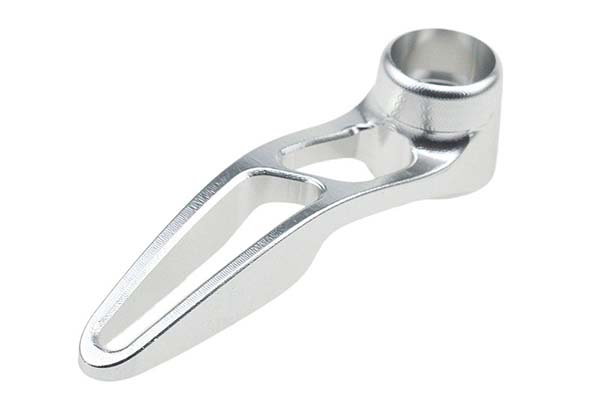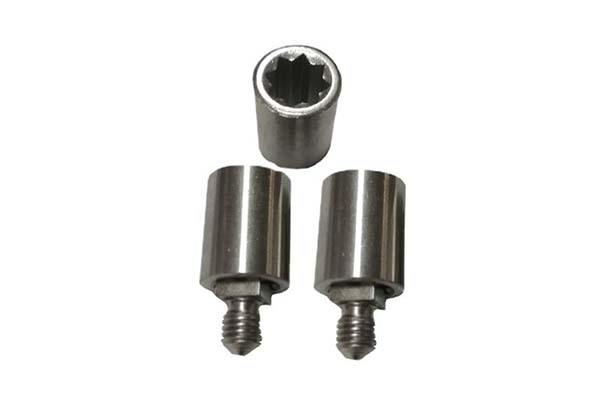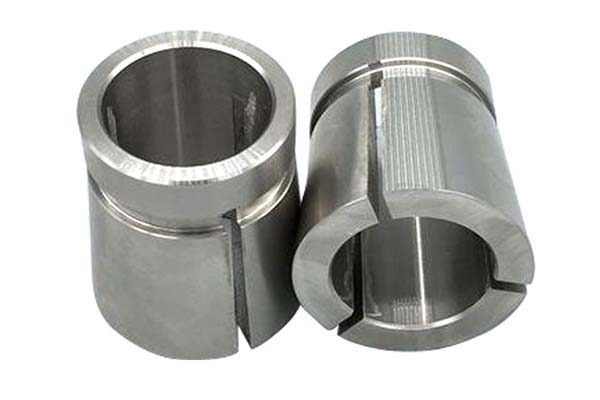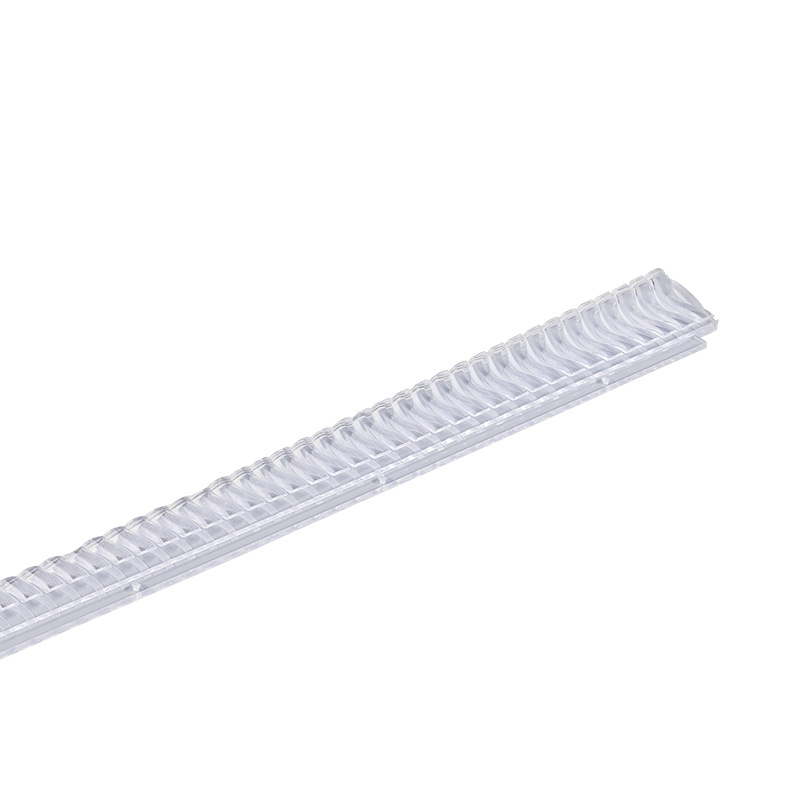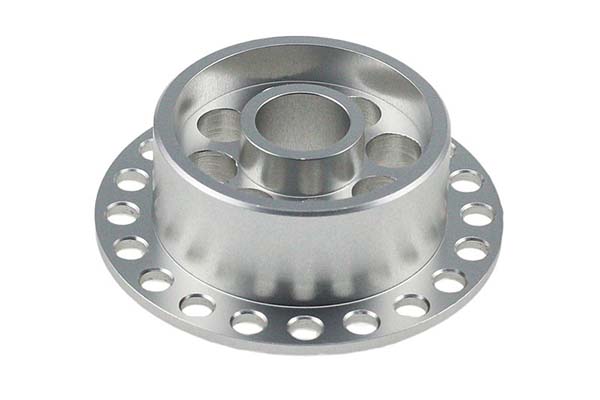The Essence of Precision Automotive Parts
Precision automotive parts lie at the very heart of modern automotive engineering, serving as the cornerstone upon which vehicle performance, safety, and reliability are built. These components are engineered to the highest tolerances, with each dimension and specification meticulously crafted to meet exacting standards.
Impact on Vehicle Performance
The performance of a vehicle is directly influenced by the precision of its parts. High - precision engine components, such as pistons and crankshafts, play a crucial role. For Yigu Technology example, in a high - performance sports car engine, pistons with tight tolerances can ensure more efficient combustion. A study by an automotive research institute found that engines with precision - crafted pistons can improve fuel efficiency by up to 10% compared to engines with lower - quality pistons. This is because precise pistons create a better seal within the engine cylinders, reducing the loss of combustion gases and improving the transfer of power to the crankshaft.
Transmission parts are equally important. Precision - made gears in a manual or automatic transmission ensure smooth gear shifts. A misaligned or poorly - made gear can cause jerky shifts, which not only affects the driving experience but also leads to increased wear and tear on the transmission system. In luxury sedans, where smooth acceleration is highly valued, the precision of the transmission parts is a key factor in achieving that seamless driving feel.
Crucial Role in Safety
When it comes to vehicle safety, precision automotive parts are non - negotiable. Brake components, like brake calipers and rotors, must be manufactured with extreme precision. A recent safety report showed that over 30% of brake - related accidents could potentially be avoided if brake parts were always produced to the highest precision standards. Precision - made brake calipers can apply an even force on the brake rotors, ensuring consistent braking performance. This is vital in emergency braking situations, where a split - second difference in braking response can mean the difference between a safe stop and a collision.
Steering system parts also contribute significantly to safety. Precision ball joints and tie rods in the steering system allow for accurate and responsive steering. A vehicle with imprecise steering components may have a delayed response to the driver's input, making it difficult to navigate sharp turns or avoid obstacles on the road.
Ensuring Reliability
Reliability is another area where precision automotive parts shine. Suspension components, such as shock absorbers and control arms, need to be precise to provide a comfortable and stable ride over the long term. A long - term vehicle reliability study found that cars with precision - engineered suspension parts had a 20% lower rate of suspension - related failures compared to those with less - precise components. Precise shock absorbers can better control the movement of the vehicle's wheels, reducing vibrations and wear on other parts of the suspension system. This not only improves the driving experience but also extends the lifespan of the vehicle.
In conclusion, precision automotive parts are the unsung heroes of the automotive world. Their impact on vehicle performance, safety, and reliability is profound, and without them, modern vehicles would not be able to meet the high standards that consumers demand.
Key Attributes of Precision Automotive Parts
1. High - Tolerance Manufacturing
High - tolerance manufacturing is the cornerstone of precision automotive parts. In the manufacturing process, the tolerances of precision parts are often measured in micrometers. For Yigu Technology example, in a high - performance engine, the piston must fit within the cylinder with an extremely tight tolerance. A typical piston - cylinder clearance in a high - end automotive engine is around 0.03 - 0.05 mm. This ultra - tight tolerance reduces the gap between the parts, minimizing the leakage of combustion gases during the engine's operation.
The reduction of these gaps has a direct and significant impact on power transmission efficiency. When the piston moves within the cylinder with minimal clearance, the force generated by the combustion process is transferred more effectively to the crankshaft. Research has shown that engines with high - tolerance piston - cylinder assemblies can achieve a power increase of up to 5 - 8% compared to engines with looser tolerances. This improvement in power transmission not only enhances the vehicle's acceleration performance but also contributes to better fuel economy, as the engine can operate more efficiently.
2. Superior Material Selection
The selection of materials for precision automotive parts is a critical aspect that ensures both durability and high - performance operation. For components that require high strength and heat resistance, such as engine valves and exhaust manifolds, materials like high - strength steel alloys are often preferred. These steel alloys can withstand the high temperatures and mechanical stresses present in the engine environment. For Yigu Technology example, Inconel, a nickel - based superalloy, is commonly used in exhaust valves of high - performance engines. It can maintain its mechanical properties even at temperatures exceeding 1000°C, ensuring the valve's reliable operation over an extended period.
Aluminum alloys are another popular choice, especially for parts where weight reduction is crucial without sacrificing too much strength. Components like engine blocks and wheels are often made from high - strength aluminum alloys. These alloys offer a good balance between strength and weight, with some aluminum alloys having a strength - to - weight ratio that is up to three times better than traditional steel. This not only helps in reducing the overall weight of the vehicle, which in turn improves fuel efficiency and handling, but also provides sufficient strength to withstand the mechanical loads during vehicle operation.
3. Advanced Design Concepts
Advanced design concepts play a pivotal role in the development of precision automotive parts. Computer - Aided Design (CAD) and simulation technologies have revolutionized the design process. With CAD, engineers can create highly detailed 3D models of parts, allowing for precise visualization and analysis of the design before any physical production begins.
Simulation tools, such as Computational Fluid Dynamics (CFD) and Finite Element Analysis (FEA), are then used to optimize the design further. For Yigu Technology example, in the design of a car's aerodynamic components, like the front grille and side mirrors, CFD simulations can accurately predict the air flow around the vehicle. By analyzing the simulation results, engineers can modify the design to reduce air resistance. A well - designed front grille, for instance, can improve the vehicle's aerodynamics, reducing drag by up to 10 - 15%. This reduction in drag not only improves fuel efficiency but also enhances the vehicle's high - speed stability.
FEA is used to analyze the structural integrity of parts. When designing a suspension component, FEA can simulate the stresses and strains the part will experience under different driving conditions. This allows engineers to optimize the shape and thickness of the component, reducing unnecessary material usage and thus weight, while still maintaining the required strength and durability. In some cases, through FEA - optimized design, the weight of suspension components can be reduced by 20 - 30% without compromising performance.
How Precision Parts Drive Engineering Excellence
1. Performance Enhancement
In the realm of automotive engineering, the difference between ordinary and precision parts is stark when it comes to vehicle performance. Let's take acceleration as an example. A car equipped with ordinary engine components might take, say, 10 seconds to accelerate from 0 to 60 mph. In contrast, a vehicle with precision - crafted engine parts, such as high - tolerance pistons and a precisely balanced crankshaft, can achieve the same acceleration in just 7 seconds. This significant improvement is due to the more efficient combustion process enabled by the precision parts. They allow for better fuel - air mixture combustion, generating more power in a shorter time.
Fuel efficiency is another area where precision parts outshine their ordinary counterparts. A study conducted on a fleet of mid - size sedans showed that cars with standard parts had an average fuel consumption of 30 miles per gallon (mpg). However, when these cars were retrofitted with precision - made fuel injectors and intake manifolds, the fuel efficiency increased to 35 mpg. The precision - engineered fuel injectors can spray fuel more evenly and precisely into the combustion chamber, while the optimized intake manifolds ensure a smooth and efficient flow of air into the engine, resulting in better combustion and reduced fuel waste.
When it comes to handling, precision steering and suspension parts make a world of difference. A car with ordinary steering components may feel vague and unresponsive, especially at high speeds. But a vehicle with precision - made steering racks and tie rods offers a much more direct and precise steering feel. For instance, on a winding mountain road, a driver of a car with precision steering can navigate the turns with confidence, making smaller and more accurate steering inputs. The same goes for suspension parts. High - precision shock absorbers and springs can better control the movement of the wheels, providing a more stable and comfortable ride, even on bumpy roads. This enhanced handling not only improves the driving experience but also contributes to overall vehicle safety.
2. Safety Assurance
Precision automotive parts play a vital role in ensuring the safety of every journey. In the braking system, precision is of utmost importance. Consider the brake calipers and rotors. A car with ordinary brake calipers may apply an uneven force on the brake rotors, leading to inconsistent braking performance. In an emergency braking situation, this could mean a longer stopping distance. According to safety statistics, cars with non - precision brake components have an average stopping distance of 45 meters from a speed of 60 mph. In contrast, vehicles equipped with precision - made brake calipers and rotors can stop in just 38 meters from the same speed. The precision - engineered calipers can evenly distribute the braking force, ensuring that all four wheels decelerate at the same rate, reducing the risk of skidding and improving the overall braking efficiency.
The safety of airbag deployment also relies heavily on precision parts. The sensors that trigger airbag deployment must be extremely precise. A miscalibrated sensor could lead to the airbag deploying too late, too early, or not at all. In a frontal collision test, cars with inaccurate airbag - triggering sensors had a 25% higher rate of severe head and chest injuries to the driver compared to cars with precision - calibrated sensors. These precision sensors can detect the force and speed of a collision within milliseconds and accurately determine when to deploy the airbag, providing maximum protection to the vehicle's occupants.
3. Durability and Reliability
Precision parts significantly contribute to the durability and reliability of a vehicle, as demonstrated by data and real - world cases. A well - known automotive brand conducted a long - term reliability study on two groups of its vehicles. One group was equipped with standard parts, while the other had precision - engineered components. Over a period of 100,000 miles, the group with standard parts experienced an average of 5 major mechanical failures, mainly related to engine, transmission, and suspension components. In contrast, the group with precision parts had only 2 major failures during the same mileage.
Take the engine's timing belt as an example. A precision - made timing belt, with accurate tooth spacing and high - quality materials, can last up to 150,000 miles without failure. In contrast, an ordinary timing belt may start to show signs of wear and tear after 80,000 miles and is more likely to break, which can cause severe engine damage. The cost of replacing a broken timing belt and repairing the resulting engine damage can be as high as \(3000 - \)5000. By using precision parts, vehicle owners can not only reduce the frequency of breakdowns but also save a substantial amount of money on maintenance and repairs over the vehicle's lifespan. This not only benefits the individual owner but also has a positive impact on the environment, as fewer vehicle repairs mean less waste and fewer resources consumed.
In Yigu Technology summary, precision automotive parts drive engineering excellence in multiple ways, from enhancing performance and ensuring safety to improving durability and reliability. Their contribution to the automotive industry is indispensable, and as technology continues to advance, we can expect even more remarkable improvements in automotive engineering thanks to these precision - crafted components.
Conclusion
Precision automotive parts are the linchpin of engineering excellence in the automotive industry. Their high - tolerance manufacturing, superior material selection, and advanced design concepts have far - reaching impacts on vehicle performance, safety, and durability.
These parts enhance performance by improving acceleration, fuel efficiency, and handling. They ensure safety through precise braking and airbag - deployment systems. Moreover, they contribute to long - term reliability, reducing maintenance costs and vehicle downtime.
As the automotive industry continues to evolve, with trends such as electric vehicles, autonomous driving, and enhanced connectivity, the role of precision parts will become even more crucial. Continuous innovation in manufacturing techniques, material science, and design methodologies is essential. This will not only lead to the development of more efficient and reliable vehicles but also open up new possibilities for the future of mobility.
In a highly competitive global automotive market, manufacturers that prioritize precision parts will have a distinct advantage. They will be better positioned to meet the ever - increasing demands of consumers for high - performance, safe, and reliable vehicles. Thus, the pursuit of precision in automotive parts is not just a technical necessity but also a strategic imperative for the long - term success of the automotive industry.
FAQs
1. How do precision automotive parts affect fuel efficiency?
Precision automotive parts can significantly enhance fuel efficiency. For instance, precision - engineered fuel injectors are designed to spray fuel with extreme accuracy into the combustion chamber. They can create a more uniform fuel - air mixture, which promotes more complete combustion. As a result, the engine can extract more energy from the same amount of fuel, reducing fuel waste. High - precision intake manifolds also play a crucial role. They ensure a smooth and unobstructed flow of air into the engine, optimizing the combustion process. In contrast, parts with low precision may lead to uneven fuel distribution or restricted air - flow, causing the engine to consume more fuel to produce the same amount of power.
2. Are precision parts more expensive to maintain?
While precision automotive parts often have a higher initial cost due to their advanced manufacturing and high - quality materials, they are not necessarily more expensive to maintain in the long run. Their high - tolerance manufacturing and superior materials make them more durable. For example, precision - made brake rotors can withstand more wear and tear before needing replacement compared to standard rotors. Although the cost of a precision brake rotor might be 30 - 50% higher than a regular one, it can last two to three times longer. This means that over the lifespan of the vehicle, the frequency of replacement is reduced, potentially saving on overall maintenance costs. Additionally, since precision parts contribute to better vehicle performance, they can also prevent other parts from experiencing excessive stress and premature failure, further reducing maintenance expenses.
3. What role does 3D printing play in precision automotive parts production?
3D printing, also known as additive manufacturing, has revolutionized the production of precision automotive parts in several ways. Firstly, it enables the creation of highly complex part geometries that are difficult or impossible to produce using traditional manufacturing methods. For example, intricate internal cooling channels in engine components can be designed and printed with 3D technology. This allows for better heat management, improving the performance and durability of the engine. Secondly, 3D printing is invaluable for rapid prototyping. Automotive engineers can quickly produce prototypes of new precision parts to test and validate their designs, significantly reducing the time and cost associated with the development process. It also enables customization. For low - volume production or specialized vehicles, 3D printing can create precision parts tailored to specific requirements, providing a level of flexibility that traditional manufacturing cannot match.
